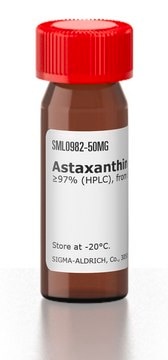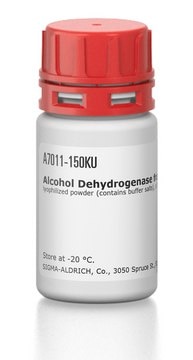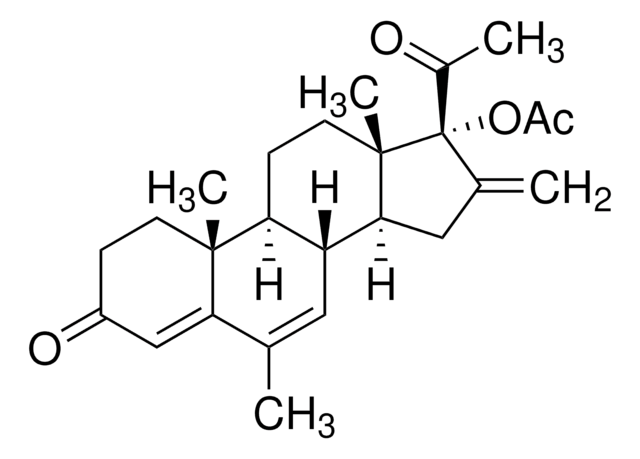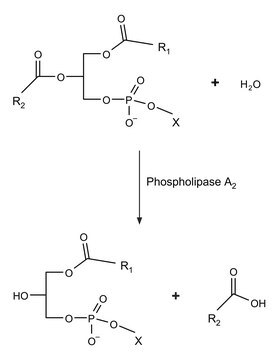C9281
Cholesterol Esterase from Pseudomonas fluorescens
lyophilized powder, ≥10,000 units/g protein
Synonym(s):
CE, bile salt-stimulated lipase, cholesteryl ester hydrolase, pancreatic cholesterol esterase, Sterol-ester acylhydrolase
About This Item
Recommended Products
biological source
Pseudomonas fluorescens
Quality Level
assay
10-30% (TCA-Biuret)
form
lyophilized powder
specific activity
≥10,000 units/g protein
mol wt
~129 kDa
composition
Protein, ~20%
storage condition
under inert gas (argon)
technique(s)
cell based assay: suitable
color
tan to brown
pH
7-9
solubility
0.4 M potassium phosphate, pH 7.0: soluble 1.0 mg/mL
storage temp.
−20°C
Looking for similar products? Visit Product Comparison Guide
General description
Cholesterol Esterase (CE) is a glycoprotein that can be isolated from fungal species such as Candida cylindracea and Pseudomonas fluorescens. It is classified as a member of the lipase/esterase family and functions as a homo-dimeric protein. CE is produced in the pancreas and is released in an active form upon stimulation by Cholecystokinin (CCK).
Application
- in cholesterol esterase assay to quantify total cholesterol from human blood serum samples
- a study to investigate the nondenaturing protein electro transfer of the esterase activity of lipolytic preparations
- an optimization study of components in enzymatic cholesterol reagents containing cholesterol oxidase
- for the modification of human plasma low-density-lipoprotein (LDL) to induce endothelial cell (EC) dysfunction and monocyte (MC) adhesion in the branched tissue-engineered blood vessels (TEBVs)
- to hydrolyze native cholesterol ester (CE) during filipin staining for detection of CE within the retinal frozen sections
Biochem/physiol Actions
Other Notes
Unit Definition
Analysis Note
Storage Class
11 - Combustible Solids
wgk_germany
WGK 3
flash_point_f
Not applicable
flash_point_c
Not applicable
ppe
Eyeshields, Gloves, type N95 (US)
Certificates of Analysis (COA)
Search for Certificates of Analysis (COA) by entering the products Lot/Batch Number. Lot and Batch Numbers can be found on a product’s label following the words ‘Lot’ or ‘Batch’.
Already Own This Product?
Find documentation for the products that you have recently purchased in the Document Library.
Customers Also Viewed
Articles
Cholesterol undergoes esterification to improve transport. Cholesterol esters are more easily packaged into the interior of lipoproteins - increasing the quantity that can be readily transported in the blood stream.
Our team of scientists has experience in all areas of research including Life Science, Material Science, Chemical Synthesis, Chromatography, Analytical and many others.
Contact Technical Service









